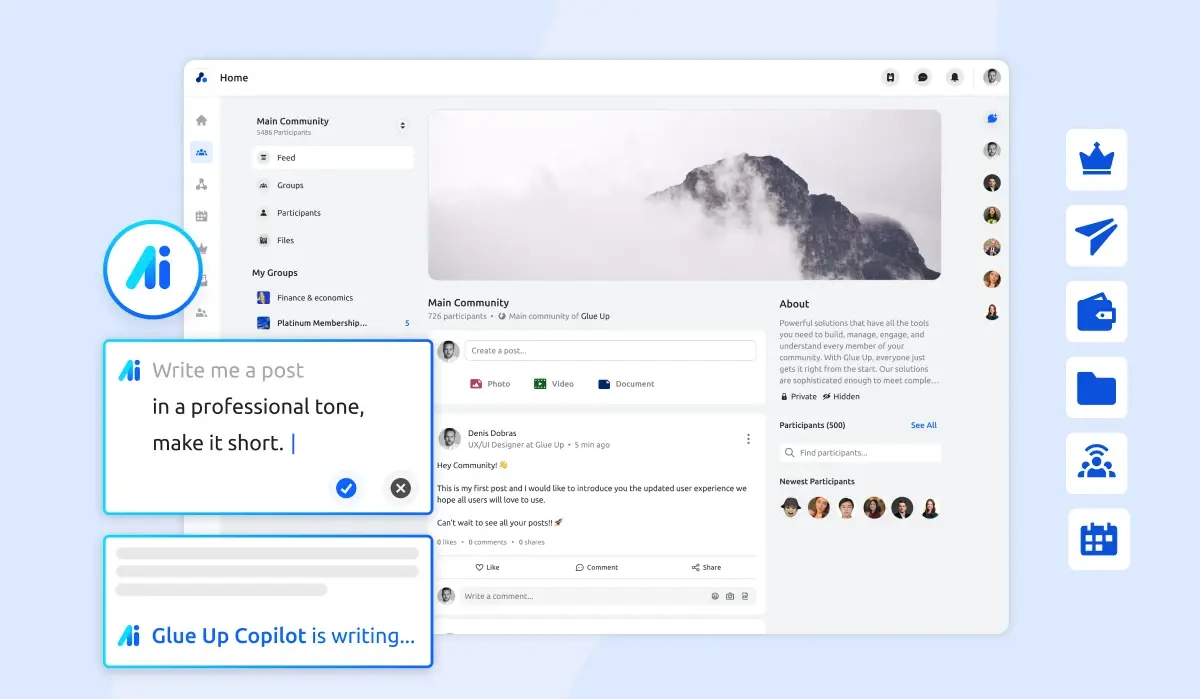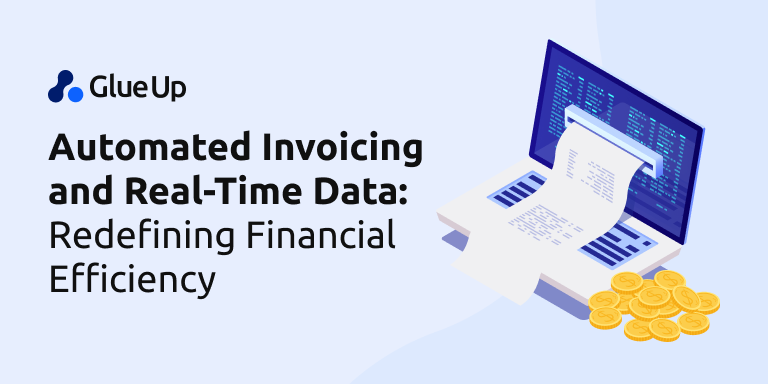
Managing member data can quickly become a complex and time-consuming task, especially as your membership grows.
Fortunately, there are a variety of tools and strategies you can leverage to simplify this process and maximize the value of your member data.
In this blog, we'll explore the key components of effective member data management and provide practical tips to streamline your association's website and operations.
Key Takeaways
- Centralize your member data in a single, comprehensive database using an association management system (AMS) or customer relationship management (CRM) platform.
- Maintain data hygiene by regularly auditing, cleaning, and updating your member information. Implement processes to validate new member data, segment your member base, and purge inactive or outdated records.
- Leverage member data and AI to create customized content, personalized experiences, and targeted communications that align with each member's interests, engagement levels, and needs.
- Streamline member onboarding and renewals by using technology and automation. Implement online enrollment and renewal processes, send personalized reminders, and integrate secure payment processing solutions.
- Prioritize data security and privacy by adhering to industry-standard security practices and regulations such as GDPR and CCPA. Ensure your website and member database use secure encryption, access controls, and clear privacy policies.
1. Centralize Your Member Data
The first step in simplifying member data management is to centralize all your member information in a single, comprehensive database.
This could be achieved through a dedicated association management system (AMS) or a customer relationship management (CRM) platform.
Read more: AMS vs CRM: What is The Best Fit for Your Association?
These tools allow you to store and organize a wide range of member data, including:
- Contact information (name, address, email, phone)
- Membership status and renewal dates
- Participation in events, committees, or volunteer activities
- Donation history and non-dues revenue
- Communication preferences and engagement levels
Having all of this data in one place gives you a broader view of your members and the interactions they have with your association. This, in turn, enables you to make more informed decisions, personalize your outreach, and identify growth opportunities.
For example, Glue Up is a popular AMS solution that helps associations manage their member data, automate administrative tasks, and streamline communication. Similarly, Salesforce is a widely used CRM platform that can be customized to meet the specific needs of membership organizations.
2. Maintain Data Hygiene

Once you have a centralized member database, it's imperative to maintain data hygiene - the process of regularly auditing, cleaning, and updating your member information.
In fact, according to Infopulse, 91% of organizations believe that data management is crucial to achieving business success. This step ensures that your data remains accurate, complete, and up to date, allowing you to make the most of your member insights.
Here are some key data hygiene practices you need to follow:
Regularly Updating Member Profiles
Encourage members to update their contact information, preferences, and other relevant details through your website or member portal. Automate this process as much as possible to reduce the administrative burden.
One such example is The American Psychological Association (APA). The association offers a comprehensive member portal called MyAPA that allows members to access exclusive content, update their profiles, register for events, and connect with colleagues.
Verifying and Validating Data
Implement processes to validate new member data, such as email address verification and address standardization. Regularly review your database for duplicate records, inconsistencies, or missing information.
Segmenting Your Member Base
Organize your members into meaningful segments based on factors like membership type, engagement level, or demographic characteristics. This allows you to tailor your communication and offerings to each group's specific needs.
You can automate this process by using Glue Up’s innovative smart lists. The smart list helps you to automatically add members to the appropriate segment based on the preset criteria selected from the list.
Purging Inactive or Outdated Records
Review and remove members periodically who have been inactive for an extended period or whose contact information is no longer valid. This helps maintain the accuracy and relevance of your data.
Maintaining clean and up-to-date member data will help your association's website and communication efforts be targeted, effective, and aligned with member needs.
3. Leverage Member Data and AI for Customized Content
One of the key benefits of effective member data management is the ability to personalize your association's website and communication efforts. It allows you to understand the unique preferences and behaviors of your members so that you can deliver a more engaging experience that fosters stronger connections and loyalty.
Use member data to curate and display content, resources, and event recommendations that are tailored to each member's interests, past engagement, and stage in the membership lifecycle.
This could include personalized news feeds, recommended courses or webinars, and targeted event promotions.

For example, Glue Up offers a community portal that allows associations to create personalized dashboards for each member, displaying relevant content, upcoming events, and other customized information.
You can also leverage member data and AI to send targeted email campaigns, push notifications, and other communications that address each member's specific needs, interests, and engagement levels.
Glue Up also offers AI-powered email marketing and communication tools that allow associations to segment their member base and deliver highly personalized messages.
4. Streamline Member Onboarding and Renewals
Efficient member onboarding and renewal processes are essential for maintaining a healthy and engaged member base.
You can also use technology and automation to simplify these critical touchpoints and provide a seamless experience for your members. Here are some strategies to streamline member onboarding and renewals:
Automated Enrollment and Renewal
Implement online enrollment and renewal processes that allow members to sign up or renew their membership directly through your website. This not only reduces the administrative burden but also provides a more convenient experience for your members.
Some advanced AMS like Glue Up offers built-in enrollment and renewal capabilities that integrate with your website and member database.
Personalized Renewal Reminders
Use your member data to send timely and personalized renewal reminders to members, highlighting the value of their membership and the benefits they'll continue to receive.
Automate these reminders using Glue Up’s membership software to ensure that members don't miss their renewal deadlines.
Integrated Payment Processing
Integrate your website and member database with a secure payment processing solution to streamline the payment experience for your members. This could include options like credit card payments, recurring billing, and automated payment reminders.
You can leverage Glue Up’s comprehensive finance management feature for these built-in payment processing capabilities and seamless integrations with popular payment gateways.
5. Implement Data Security and Privacy Regulations

With the increasing focus on data privacy regulations, such as the General Data Protection Regulation (GDPR) and the California Consumer Privacy Act (CCPA), it's crucial to prioritize data security and privacy when managing member information.
Ensure that your website and member database adhere to industry-standard security practices, such as:
- Secure Sockets Layer (SSL) encryption to protect data transmitted between your website and users' browsers.
- Regular software updates and security patches to address vulnerabilities.
- Access controls and permissions to limit who can view and modify member data.
- Clear privacy policies outline how member data is collected, used, and protected.
For example, The Institute of Electrical and Electronics Engineers (IEEE) prominently displays its privacy policy on its website, detailing how member data is handled and providing options for members to manage their privacy preferences.
5. Leverage Learning Management Systems
Associations are often known for providing valuable educational and professional development opportunities for their members.
To effectively manage and deliver these learning resources, consider integrating a learning management system (LMS) with your association's website and member database.
An LMS can help you:
- Centralize Learning Content: Store all your educational materials, such as courses, webinars, and downloadable resources, in a centralized content library that is easily accessible to your members.
- Track Learning Progress: Monitor and analyze your members' engagement with the learning content, including completion rates, quiz scores, and time spent on each module. This data can help you optimize your educational offerings and tailor them to your members' needs.
- Integrate with Member Database: Seamlessly integrate your LMS with your association's member database to streamline the enrollment process, track member progress, and award certifications or continuing education credits.
For example, the Association for Talent Development (ATD) is a leading association dedicated to those who develop talent in organizations. It offers an extensive LMS with courses, certifications, and resources for talent development professionals.
6. Optimize Your Website for Member Engagement
Your association's website is the primary touchpoint for your members, and it plays a crucial role in driving engagement, retention, and growth.
By optimizing your website for member engagement, you can create a more compelling and user-friendly experience that keeps your members coming back.
You can learn more about creating a user-friendly membership website by reading this article. You can also check your website’s performance by using our free website grader tool.
Over to You
With the strategies and tools mentioned above, you’ll be well on your way to effective member data management for your website and organization.
Remember, the key to successful member data management is to continuously adapt and refine your strategies based on member feedback and evolving best practices.
The right tools and technologies will ensure that your association's website and operations align with the needs and preferences of your members, ultimately resulting in a more engaged, loyal, and thriving membership.
To learn more about how you can manage your website and member data using Glue Up, consider booking a demo with our team here.



